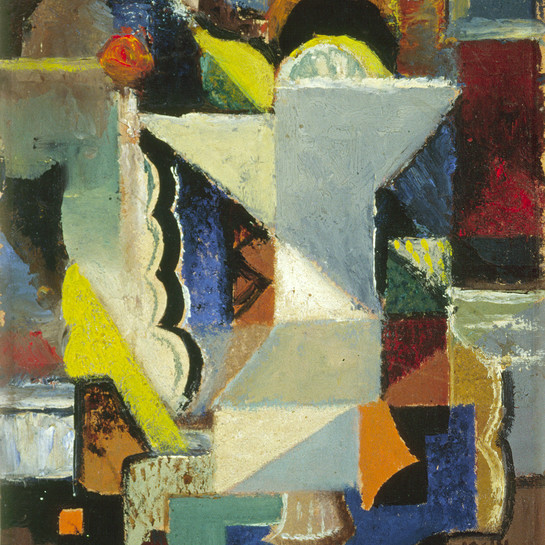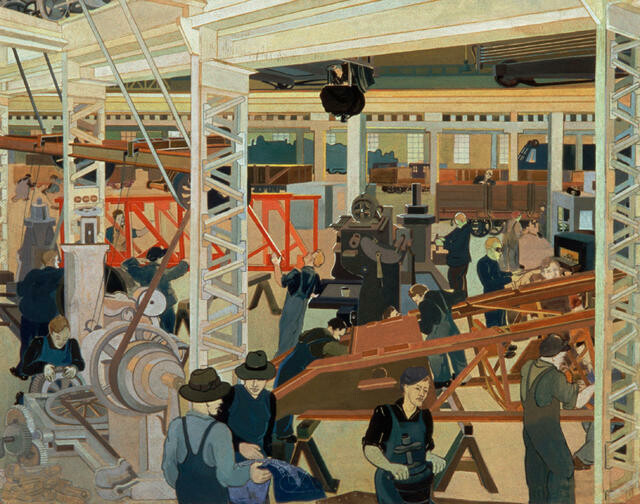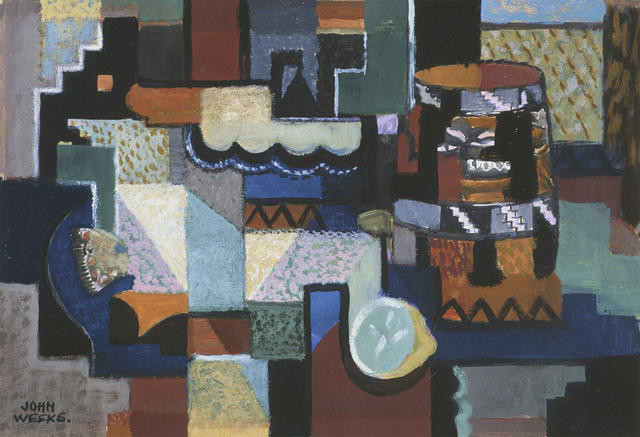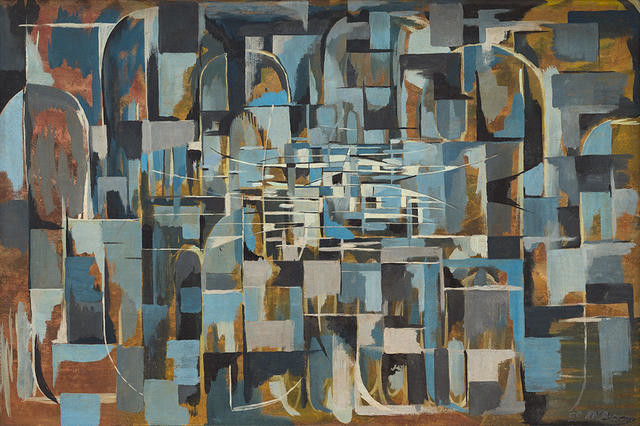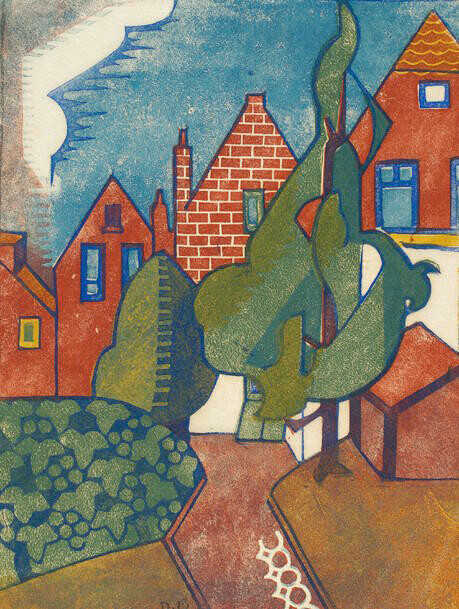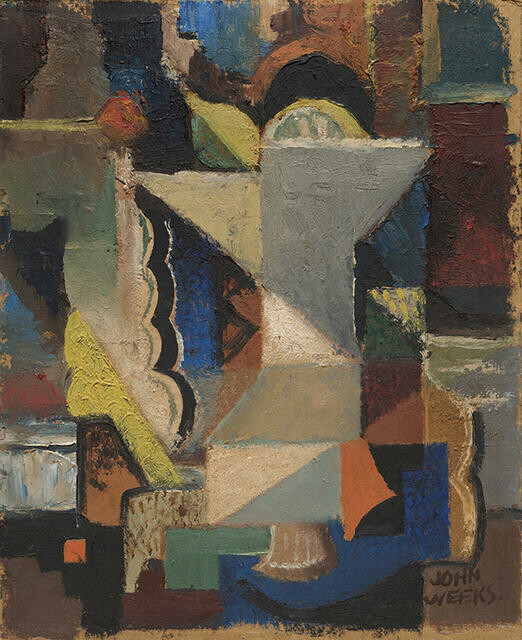A. Lois White
Aotearoa New Zealand, b.1903, d.1984
Expulsion
- c. 1939
- Oil on board
- Purchased 2009
- 620 x 520mm
- 2009/010
Tags: animals, Christianity, fruit, gardens (open spaces), men (male humans), nudes (representations), paradise (doctrinal concept), people (agents), religious art, snakes, trees, women (female humans)
Lois White was a prominent, individualistic voice in New Zealand painting in the 1930s and 1940s, who attracted attention with her modernistic, art-deco style figure compositions.
A student at Elam School of Fine of Arts in Auckland in the 1920s, White also taught there for many years from 1928. Equally interested in the old masters as in the cubists and other modern painters, she admitted looking at “anything that I could get my eyes and brain working on […] I was very taken with all the figure compositions of Botticelli.”
Such varied sources are evident in her dramatic depiction of Adam and Eve, the first humans in the biblical account of the creation of the world. Painted at the start of World War II, it may be seen as an allegorical reflection on the human condition. (In Modern Times, 18 December 2015 – 11 September 2016)
Exhibition History
Brought to light, November 2009- 22 February 2011
This violently fractured portrayal of the consequences of original sin for Adam and Eve is a strong early example of the religious works that were a prominent aspect of Lois White’s practice. White’s interest in religious, humanitarian and sexual themes caused considerable controversy, while her expressive depiction of the female body reflected the increasing physical liberation of women that occurred during the 1930s. Though her subjects were often traditional, White’s style was overtly modern, incorporating the dynamic curves and zig-zags of the art deco style. An unwavering focus on the human figure held White’s work apart from the landscape tradition that dominated New Zealand painting during much of her career.
White depicts the biblical story of humankind’s expulsion from the Garden of Eden as described in the Book of Genesis. Within an unstable and fracturing landscape, a kneeling Eve hangs her head while behind her Adam looks fearfully upwards. A serpent winds itself across the composition, its tail wrapped around the Tree of Knowledge of Good and Evil (from which Eve has picked an apple). White’s treatment of the figures is highly stylised – they have minimal facial features and are positioned to emphasise the strong diagonal lines of the composition. The landscape ruptures violently into block-like pieces, suggesting the power of God’s wrath. (Acquisition note, 2009)
